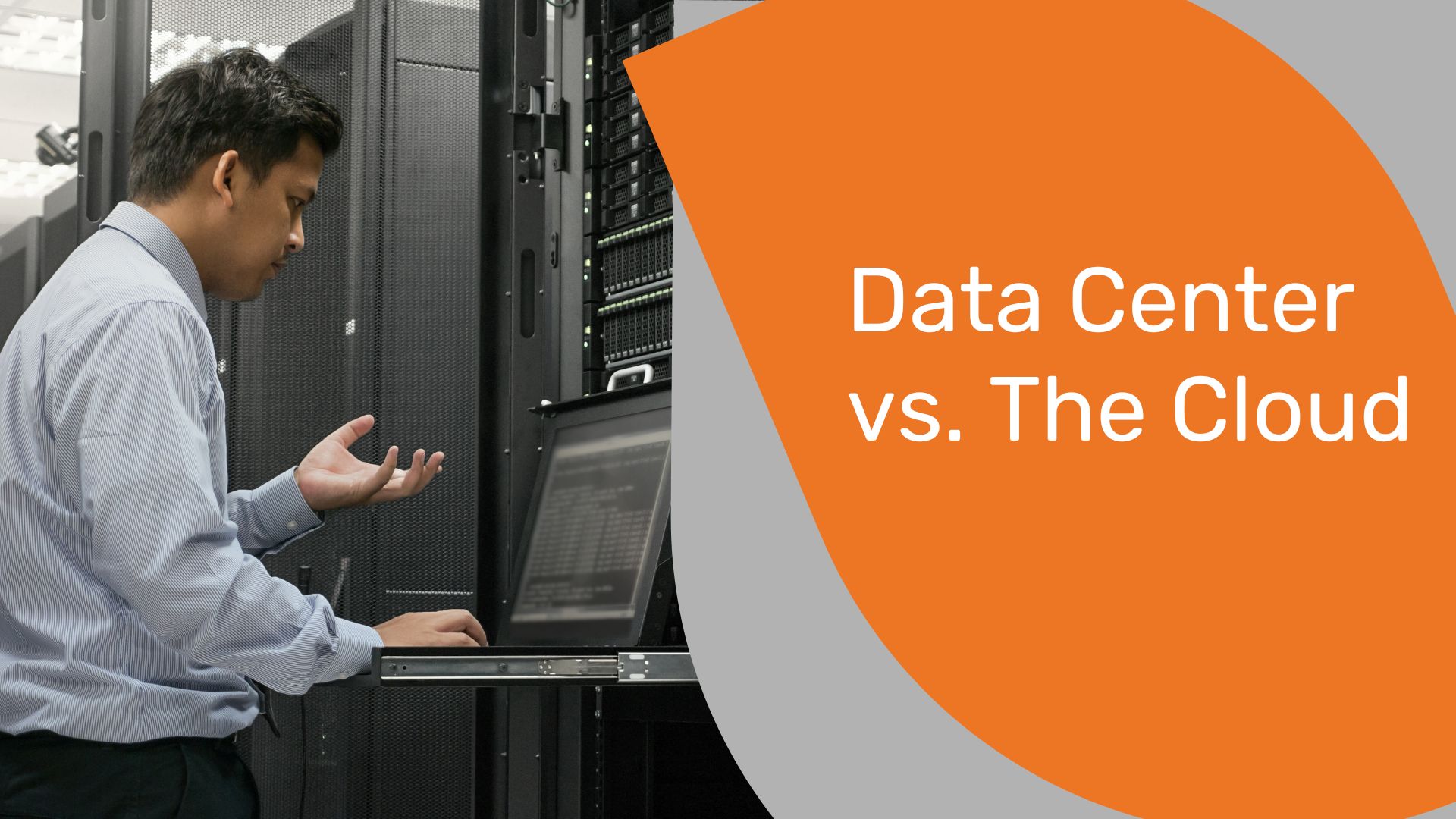Data center and cloud are words that have different meanings to different people and organizations. Some see a data center as a room in their building, while others see it as a dedicated facility that’s full of rows of servers with blinking lights. Cloud can mean iCloud on your phone, a streaming service, Software-as-a-Service, Office 365, Azure, AWS, or much, much more.
What is a data center?
At its most basic, a data center is a dedicated space that houses servers and has connectivity to those servers and the apps/services they provide. There is not a strict definition of what makes a data center, but generally, it will have redundant power and internet connectivity, dedicated cooling (servers generate a lot of heat), and physical security. The security can be as little as a locked door and as advanced as bone-density scanning, mantraps, and 24/7 attended security.
Who uses a data center?
- Companies that need a secure place to keep their servers.
- The cloud. It runs out of many data centers across the world and is an inter-connected network of many data centers that can help balance workloads and provide resiliency
What are the types of data centers?
- Corporate data center – dedicated space for servers and networking generally contained in a building owned by a business.
- Commercial data center – dedicated buildings that lease space or resources to businesses to contain and house their services.
The Cloud
As mentioned above, the cloud has many meanings and connotations. Generally speaking, a good way to summarize the cloud is to think of it as your apps, data, software, or services running on a server hosted by someone else.
For these definitions, we will break down the public cloud, private cloud, and hybrid cloud technology. Other forms of the cloud include cloud services and SaaS applications, but that is another story for another day.
Public Cloud
Possibly the purest form of cloud is the public cloud. The major players in this space include Microsoft’s Azure, Amazon’s AWS, and Google’s GCP products. Most of these services provide consumption-based or pay-as-you-go servers, databases, storage, and other related IT products and services.
Pros:
- There are huge pools of resources available to consume at the click of a button.
- Many services that exist (standalone databases, mass data storage) are unattainable in other models for most organizations.
- Generally, back-end systems are optimized and balanced between pools of host servers without any interaction on the consumer’s part.
- Low cost of entry.
- A large geographic footprint allows workloads to exist in an optimal location.
Cons:
- Like many commodity services, you are at the mercy of a support queue, and if there is a problem or outage, you are waiting in line with everyone else to get help.
- Product catalogs are generally very large and very complex and tend to change over time.
- Cost control can become a challenge without the ability to manage resources effectively.
Private Cloud
The private cloud has evolved from commercial data centers offering dedicated hosted servers to more holistic bundles of services. Think of the private cloud as leasing the compute, storage, etc. from a provider but having resources dedicated to your needs only.
Pros:
- Dedicated resources can help insulate your business from widespread outages or noisy neighbors causing performance issues.
- Solutions are often built just for your needs, not taking your needs and finding the close-enough SKU to provide services.
- Generally, there is more flexibility to change resource allocations without changing pricing dramatically. You pay for a pool of resources and can divvy them up how you see fit.
Cons:
- Dedicated resources can constrain your growth, as there are generally terms associated that make scaling up difficult and expensive, and shrinking your footprint may mean paying for resources you don’t use.
- It may require more hands-on management of workloads to optimize performance; fewer hosts pooled together can provide resource contention without an easy path to resolve.
- There is generally a higher cost of entry and occasional forklift upgrade costs if a hardware refresh is not included in the service.
Hybrid Cloud
A blend of the public cloud and private cloud, where some resources exist in each; and may extend into a traditional data center or on-premises servers.
Pros:
- You can get the best of both worlds, especially if there are only certain services or data types that need different controls or services.
- The capability to split workloads for cost-effectiveness; especially if you need QA or development resources, which can be turned on and off on the public cloud.
- There’s a steppingstone opportunity to begin migrating workloads from the private cloud or local datacenter to the public cloud.
Cons:
- It generally requires multiple tools to manage, which can cause issues with the efficiency and effectiveness of the solution.
- It relies on connectivity between clouds. If this is not optimal, performance issues will likely occur.
- Your IT staff or partners must have strong knowledge of both platforms to be effective.
Layered on top of data centers and clouds are often service providers. While managed service providers can help with some of the needs in either, Cloud Service Providers are uniquely positioned to serve not only the technical needs of a business but to understand and deliver an optimal solution that drives business outcomes.
If you are wondering which service is best for your business, our experts can help.

